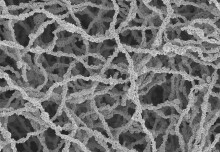

Professor Peter Childs from the Dyson School of Design Engineering discusses air quality in aircraft cabins in his Q&A.
The recent announcement by the airline company EasyJet that they will be fitting filters to stop toxic fumes entering its passenger cabins and cockpits to prevent so-called “aerotoxic syndrome” has shone the spotlight on cabin air quality.
Professor Childs will be speaking at the Aircraft Cabin Air Conference 2017, held today at Imperial College London, to discuss how improvements in technology can help airlines improve their air quality and avoid the dangers of “aerotoxic syndrome”.
Just before his speech to delegates including pilots, air cabin crew, medics, scientists and aviation specialists, Colin Smith caught up with Professor Childs to learn more.
What is aerotoxic syndrome?
There is actually much debate in the industry about whether there is a condition called aerotoxic syndrome, but there have been incidences when toxic fumes may have leaked into aircraft cabins, which has been associated with cabin crews feeling “spaced out”, light headed and experiencing symptoms like vomiting. What we do know is that inadequacies in the air system could lead to complications for crew and passengers.
How can this happen?
A key issue is the quality of air that is delivered into the cabin and then recirculated. For example, if the air supply is contaminated or if the air is circulated in a compressor, and it is not treated or filtered, then its’ quality is at risk.
People within any confined space, whether it is a building or an aircraft cabin, need fresh air. We have learned a lot about air quality in aircraft as an unintended consequence of improvements in the way that we manage air circulation in buildings.
How long has this problem been around for?
The issue of providing cabin air has been with us for as long as we have been flying at high altitudes. As flight ranges and passengers numbers have increased the challenge has grown because we need to provide larger quantities of pressurised clean air and provide adequate and regular exchanges of air.
How is cabin air supplied to the crew and passengers?
Air can be supplied to an aircraft cabin in lots of different ways. Conventional technologies use pipes, called bleeds, which come from compressors in the jet engine, which has been used to transport air into the cabin. More recently engineers have introduced compressors driven directly by an electric motor, which makes the process more effective and efficient.
How can Imperial help with this problem?
We have significant expertise across the College in healthcare and in developing relevant engineering technologies such as seals and filters, as well being leaders in the field in the designs of systems for aircraft.
This is important because what we need now is on-going innovation to make sure the air we breathe, moment-by-moment, is of the highest quality. We have a real opportunity to transform the quality of the flying experience by managing air supplies.
What does the future hold?
The aviation industry is seeing the emergence of new forms of aircraft such as solar powered variants. So, interestingly at the time when we are learning how to solve this problem, it could be that issues associated with fuels and oils could become a thing of the past.
Article text (excluding photos or graphics) available under an Attribution-NonCommercial-ShareAlike Creative Commons license.
Photos and graphics subject to third party copyright used with permission or © Imperial College London.
Reporter
Colin Smith
Communications and Public Affairs

Contact details
Email: press.office@imperial.ac.uk
Show all stories by this author




Leave a comment
Your comment may be published, displaying your name as you provide it, unless you request otherwise. Your contact details will never be published.